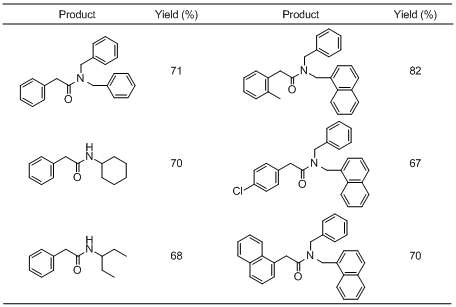Caution Notice:
It has come to our notice that certain fraudulent individuals or entities are misusing our Company’s name and TCI’s registered trademarks by promoting and offering for sale regulated and hazardous chemical substances, including Potassium Cyanide, through online platforms like YouTube. We hereby categorically clarify that TCI has no association or connection whatsoever with the products being displayed or sold in these or similar videos. These products have been falsely represented as being associated with TCI, and the unauthorized use of our trademark and brand name is both illegal and misleading. TCI Chemicals is a responsible global organization committed to adhering to all applicable international and domestic regulatory frameworks. We do not manufacture, distribute, or engage in the sale of regulated chemical substances in India or in any other jurisdiction unless specifically authorized by the relevant laws and regulatory agencies. All our operations and offerings are governed by stringent safety, quality, and compliance protocols in accordance with applicable laws. Further, TCI Chemicals markets and sells its products exclusively through its official website and authorized distributors. We do not sell, endorse, or supply our products through any third-party platforms, unauthorized agents, or resellers. Any individual or organization purchasing products outside these official channels does so at their own risk, and TCI disclaims all responsibility and liability for any consequences arising therefrom. Members of the public, customers, and partners are strongly advised to exercise caution and conduct due diligence before engaging in any transactions involving products claiming association with TCI Chemicals. The official list of our authorized distributors is publicly available and may be accessed at: https://www.tcichemicals.com/IN/en/distributor/index. We are currently pursuing appropriate legal remedies against those misusing our brand, and we reserve all rights available to us under applicable intellectual property and criminal laws. If you become aware of any such fraudulent activity or require clarification, you may reach out to us at: Sales-IN@TCIchemicals.com. Your vigilance and cooperation are essential in safeguarding the public interest and protecting the integrity of the TCI brand.
Maximum quantity allowed is 999
Please select the quantity
Useful Palladium Catalyst for C(sp3)–H Activation
No.164(January 2015)
Dichloro[9,9-dimethyl-4,5-bis(diphenylphosphino)xanthene]palladium(II) (1) is a useful catalyst for benzylic C(sp3)–H bond activation. For example, under the presence of CO and di-tert-butyl peroxide (= TBP), benzylic C–H bonds of alkyl aromatics are selectively activated by the action of 1. Subsequent aminocarbonylation with amines successfully proceeds to afford the corresponding arylacetamides.1) This reaction can be applied to substrates bearing a halogen substituent, and a subsequent cross-coupling reaction facilitates expedient synthesis of complex arylacetamides. By using this protocol, the anti-inflammatory agent ibuprofen can be easily obtained. As a similar synthetic manner, alkoxycarbonylations also proceed by using alcohols instead of amines.2)


Typical Procedure:
A mixture of Pd(Xantphos)Cl2 (7.6 mg, 5 mol%), toluene derivative (20.0 mmol), amine (0.2 mmol) and TBP (53.0 mg, 0.36 mmol) is added into an autoclave. Then the autoclave is purged and charged with CO at 10 atm. The reaction mixture is stirred at 120 °C for 16 h, and then CO is carefully released. The corresponding reaction mixture is purified by flash column chromatography on silica gel to give the desired product.
A mixture of Pd(Xantphos)Cl2 (7.6 mg, 5 mol%), toluene derivative (20.0 mmol), amine (0.2 mmol) and TBP (53.0 mg, 0.36 mmol) is added into an autoclave. Then the autoclave is purged and charged with CO at 10 atm. The reaction mixture is stirred at 120 °C for 16 h, and then CO is carefully released. The corresponding reaction mixture is purified by flash column chromatography on silica gel to give the desired product.
References
- 1)Palladium-catalyzed oxidative aminocarbonylation: A new entry to amides via C–H activation
- 2)Palladium-catalyzed oxidative carbonylation of benzylic C–H bonds via nondirected C(sp3)–H activation
The prices are subject to change without notice. Please confirm the newest price by our online catalog before placing an order.
In addition, sales products changes with areas. Please understand that a product is not available when the product details page is not displayed.
In addition, sales products changes with areas. Please understand that a product is not available when the product details page is not displayed.


